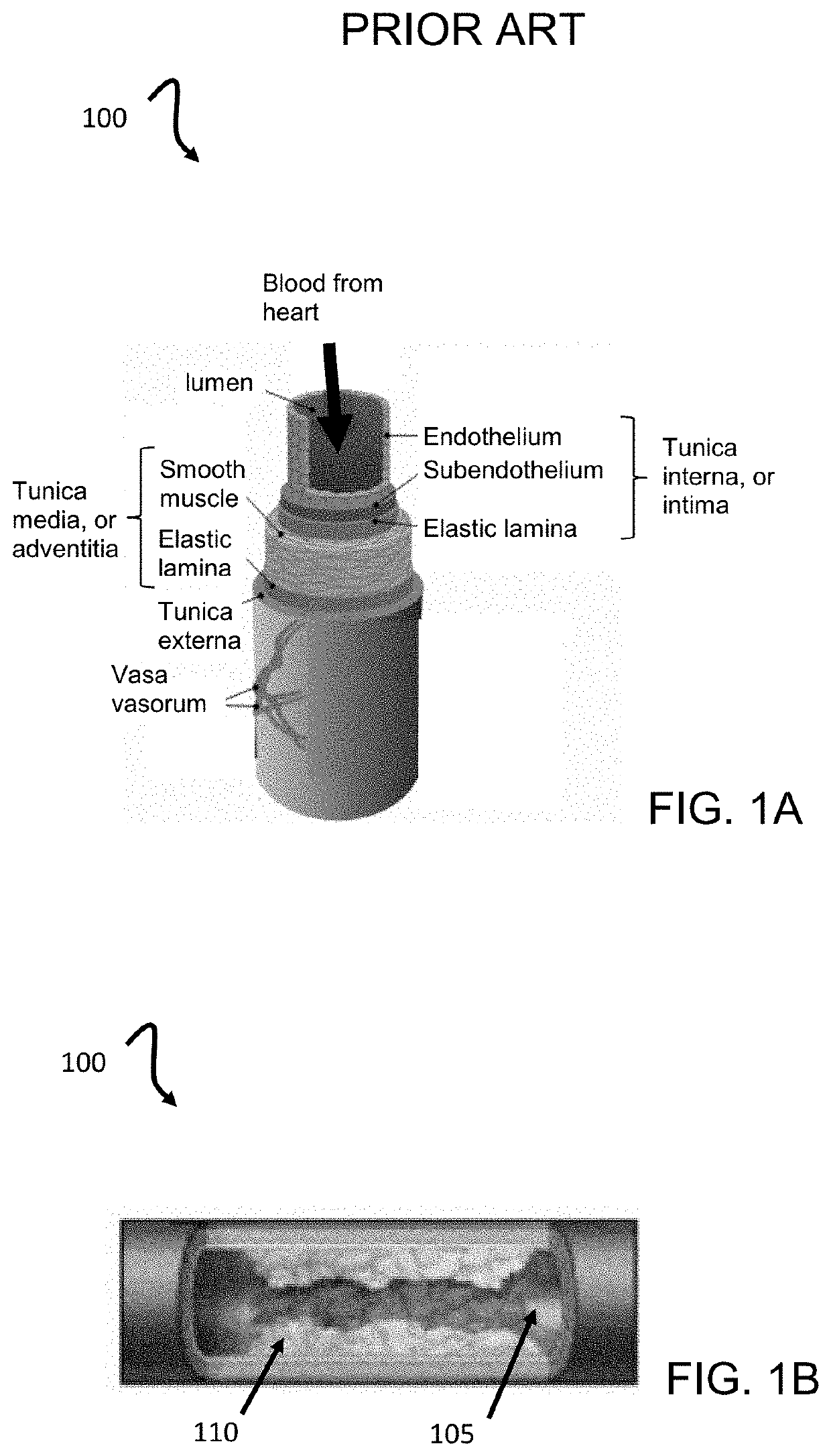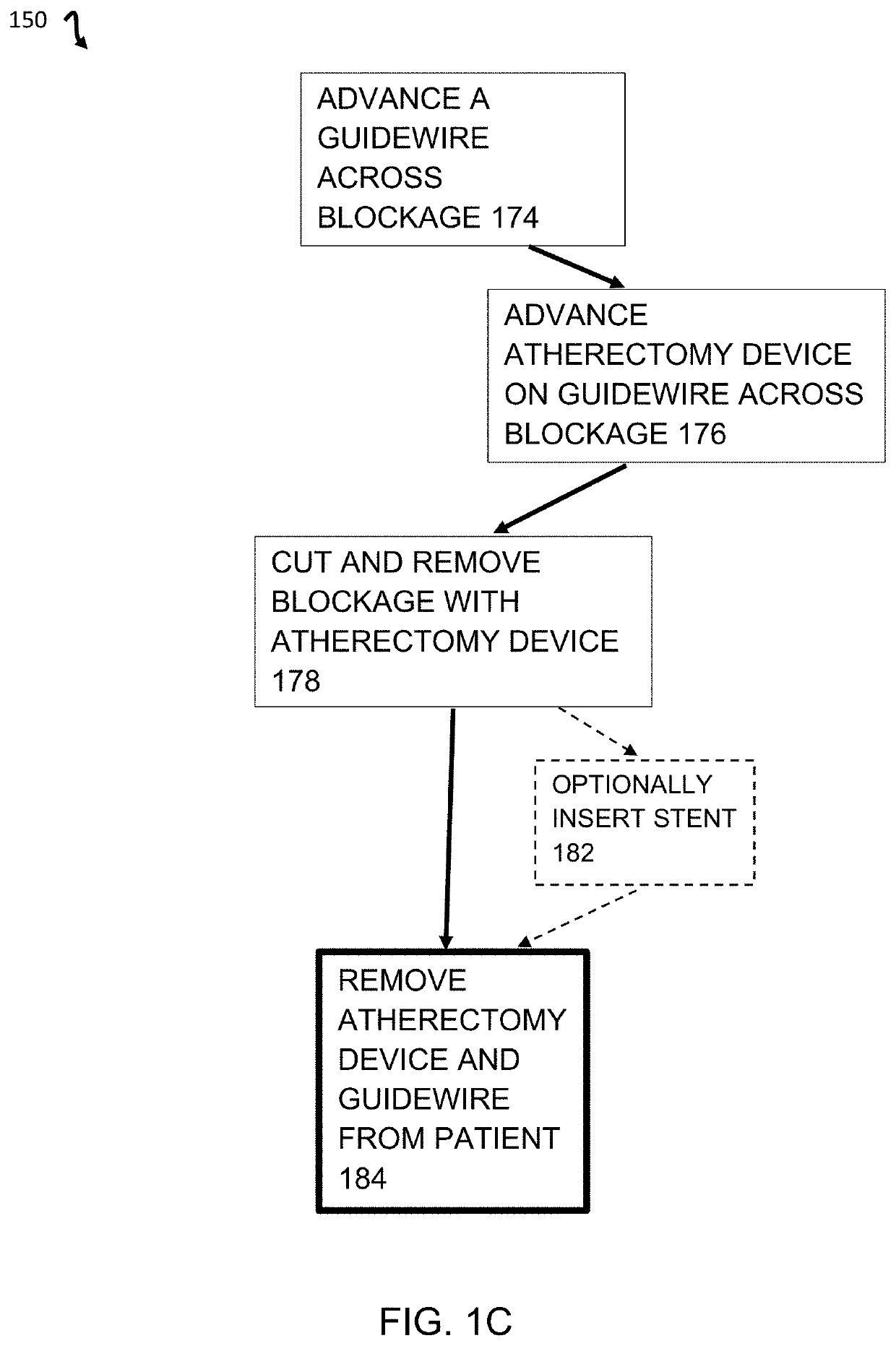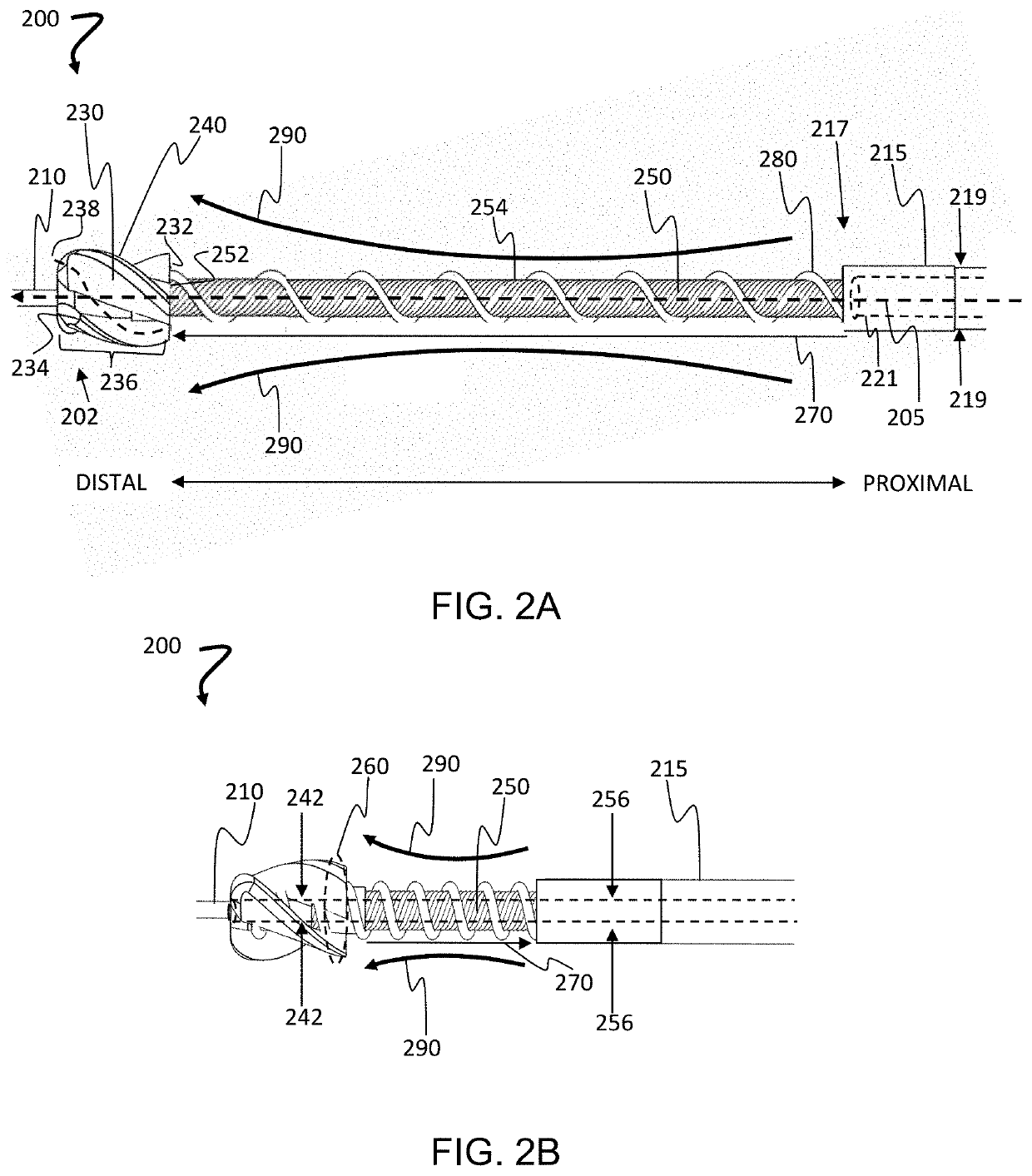Telescoping atherectomy device
a technology of atherectomy device and telescopic body, which is applied in the field oftelescoping atherectomy device, can solve the problems of ripping the vessel wall, affecting the performance of state-of-the-art atherectomy device, and forming scar tissue, so as to and reduce the burden of plaqu
- Summary
- Abstract
- Description
- Claims
- Application Information
AI Technical Summary
Benefits of technology
Problems solved by technology
Method used
Image
Examples
Embodiment Construction
[0031]Atherectomy devices, and methods of using them are provided, namely devices and methods that (i) can effectively cut and remove the 4 different types of plaque tissue, namely calcified and hard, necrotic and soft, fibrotic, and a combination thereof, including fibrocalcific tissue; (ii) can render a concentric vessel lumen with minimal plaque burden; (iii) can safely self-collect and remove plaque particles to avoid release of emboli; (iv) can effectively treat a blood vessel with a reduced risk of suffering vessel injuries that can lead to increased restenosis. And, importantly, one of skill will certainly appreciate an atherectomy device that, surprisingly, (v) can also handle tight or tough lesions having little to no luminal opening in the lesion. The atherectomy devices taught herein can be telescoping, self-driving, lateral pushing, or a combination thereof. The devices provided herein can, for example, render a concentric lumen with minimal plaque burden (<30% vessel di...
PUM
 Login to View More
Login to View More Abstract
Description
Claims
Application Information
 Login to View More
Login to View More - R&D
- Intellectual Property
- Life Sciences
- Materials
- Tech Scout
- Unparalleled Data Quality
- Higher Quality Content
- 60% Fewer Hallucinations
Browse by: Latest US Patents, China's latest patents, Technical Efficacy Thesaurus, Application Domain, Technology Topic, Popular Technical Reports.
© 2025 PatSnap. All rights reserved.Legal|Privacy policy|Modern Slavery Act Transparency Statement|Sitemap|About US| Contact US: help@patsnap.com



